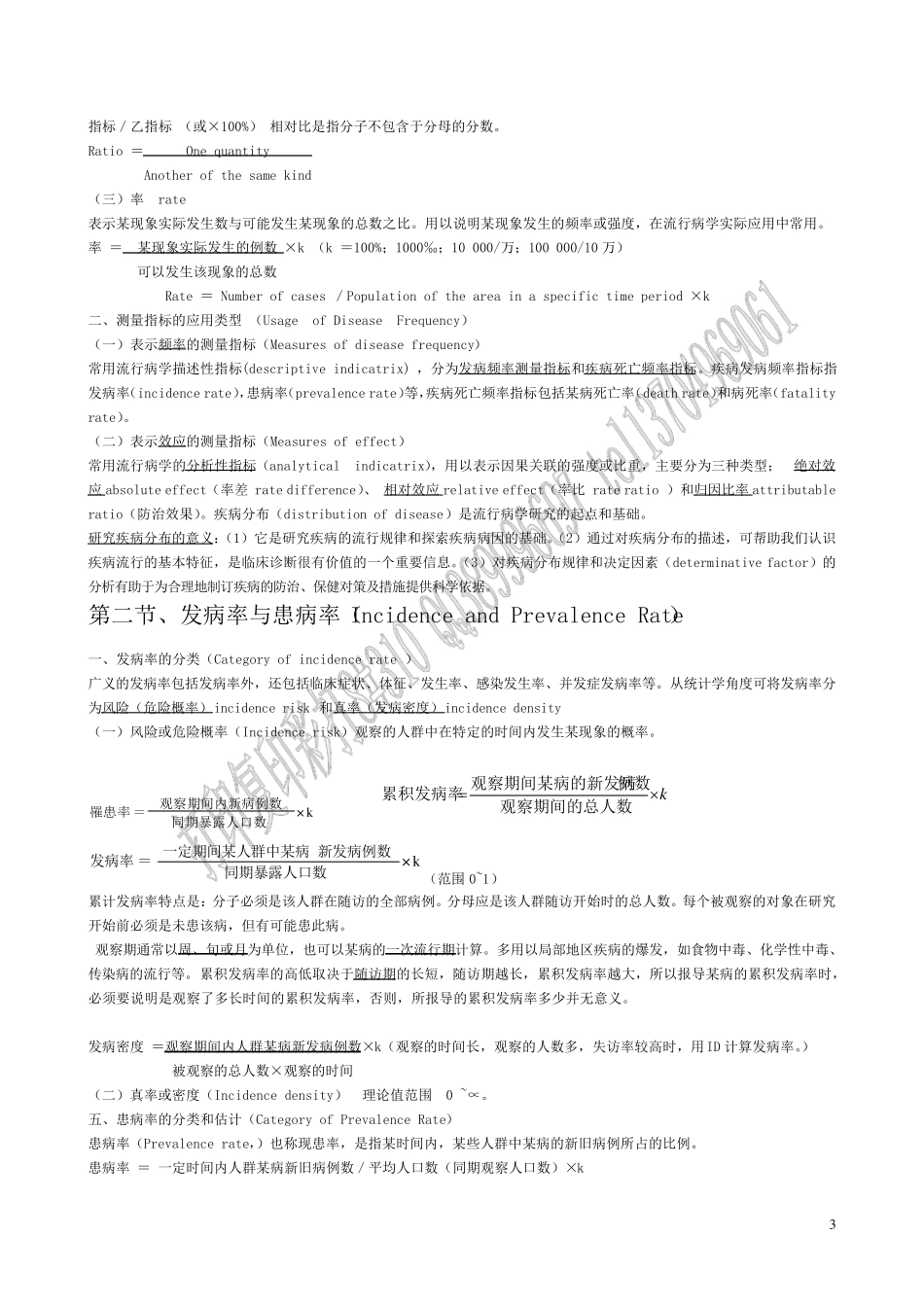1 临床流行病学总结 第一章.绪论 第一节、流行病学定义 1、流行病学的研究范围已经由研究传染病扩展到非传染病;又从“疾病”扩展、延伸到“健康”以及与健康有关的卫生事件(public health events);研究的内容既包括了描述疾病的人群“分布”、探索疾病的“流行因素(决定因素 risk factors,determinants),还包括研究、提出、评价预防与控制疾病,促进健康的对策与措施。 2、临床流行病学(clinical epidemiology):是将现代流行病学及生物统计学的原理和方法融入临床医学领域,研究患病群体的疾病自然史(natural history of disease ),通过周密设计(design)、准确的测量(measurement),对临床的诊断(diagnosis)方法、治疗效果(therapeutic efficacy)及预后(prognosis)进行综合评价(evaluation )的一门学科。 英文解释:Clinical Epidemiology:The application of the logical and quantitative concepts and methods of epidemiology to problems (diagnostic, prognostic, therapeutic, and preventive) encountered in the clinical delivery of care to individual patients. The population aspect of epidemiology is present because these individual patients are members of conceptual populations. "A basic science for clinical medicine". 3、临床流行病学的目的是建立和发展能够减少系统误差(systematic error)和随机误差(random error)造成误导的临床观察方法,从而得出符合真实情况的结论。 4、最初,临床流行病学强 调 在 临床研究进行严 格 的设计、测量与评价(design, measurement and evaluation on clinical research, DME)。 5、在 20 世 纪 90 年 代初,INCLEN(国 际 临床流行病学网 络 )进入了总体计划 的第二 期 项 目,提出其 宗 旨 为 :“在 最可 靠 的临床依 据 和有效使 用 卫生资 源 的基 础 上 ,促进临床医学实践 ,从而改 善 人民 健康。为 达 此 目的,本 工 作 网 内各 国 临床医师 、统计师 及社 会 学家 须 共 同 奋 斗 ,以建立和维 持 科学研究和医学教 育 最佳 的和可 靠 水 平 的能力 。” 第二 节、流行病学特 性 一、流行病学特 点 :研究的手 段 是采 用 流行病学和生物统计学的原理和方法;研...


